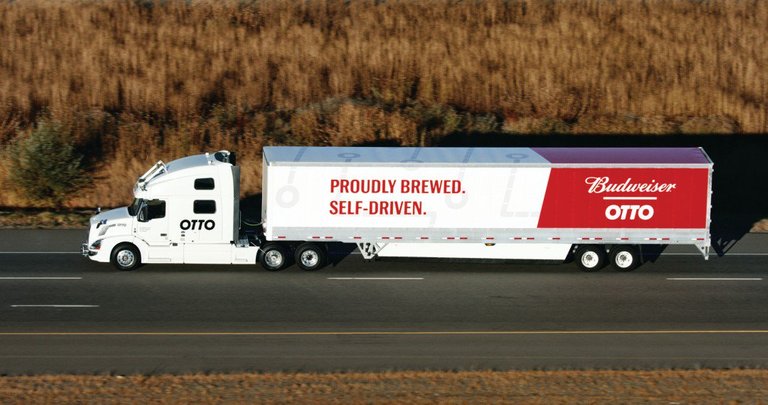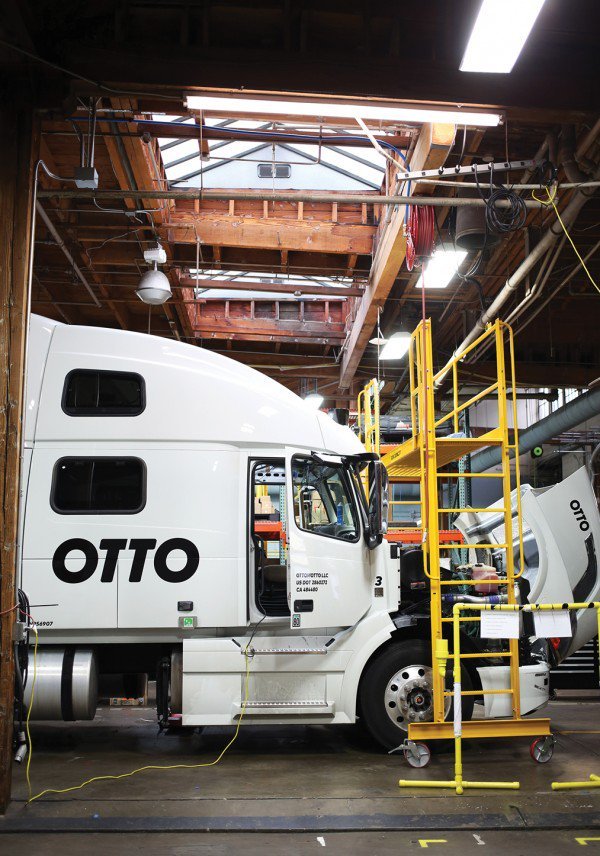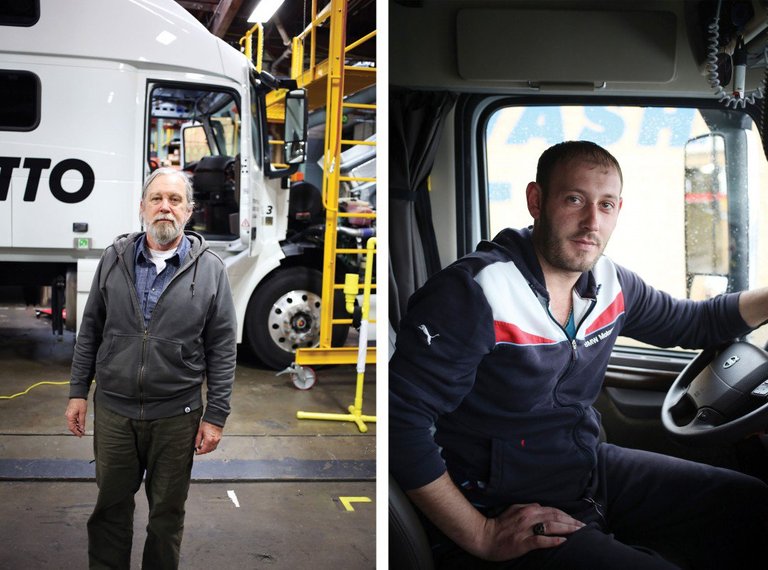
At first glance, the opportunities and challenges posed by self-driving trucks might seem to merely echo those associated with self-driving cars. But trucks aren’t just long cars. For one thing, the economic rationale for self-driving trucks might be even stronger than the one for driver less cars. Autonomous trucks can coordinate their movements to platoon closely together over long stretches of highway, cutting down on wind drag and saving on fuel. And letting the truck drive itself part of the time figures to help truckers complete their routes sooner.
But the technological obstacles facing autonomous trucks are higher than the ones for self-driving cars. Otto and other companies will need to demonstrate that sensors and code can match the situational awareness of a professional trucker—skills honed by years of experience and training in piloting an easily destabilized juggernaut, with the momentum of 25 Honda Accords, in the face of confusing road hazards, poor surface conditions, and unpredictable car drivers.
And perhaps most important, if self-driving trucks do take hold, they figure to be more controversial than self-driving cars. At a time when our politics and economy are already being upended by the threats that automation poses to jobs, self-driving trucks will affect an enormous number of blue-collar workers. There are 1.7 million trucking jobs in the U.S., according to the Bureau of Labor Statistics. Technology is unlikely to replace truckers entirely anytime soon. But it will almost certainly alter the nature of the job, and not necessarily in ways that all would welcome.

Berdinis shows off the latest generation of the company’s fast-evolving technology, which is currently installed on Volvo semis. Unlike the bolted-on, kludgy-looking hardware that’s been on testing runs for the past year, the newer versions of the company’s sensor and processing arrays are more sleekly integrated throughout the Volvo cab. The equipment includes four forward-facing video cameras, radar, and a box of accelerometers that Berdinis boasts is “as close as the government allows you to get to missile-guidance quality.”

Particularly key to Otto’s technology is a lidar system, which uses a pulsed laser to amass detailed data about the truck’s surroundings. The current third-party lidar box costs Otto in the vicinity of $100,000 each. But the company has a team designing a proprietary version that could cost less than $10,000.
Otto was founded early in 2016 by Anthony Levandowski, who had been with Google’s self-driving-car effort, and Lior Ron, who headed up Google Maps, along with two others. It was a natural move to build on Google’s vast experience with its autonomous cars, which have driven more than two million miles on U.S. roads in several states, with an eye toward the four million trucks in the U.S. alone. Volvo Trucks, Daimler Trucks, and Peterbilt have been working on their own autonomous-truck technology.
Then, as further validation, Uber snatched Otto up for a reported $680 million last August. That deal has given Otto’s team access to roughly 500 engineers at Uber working on self-driving technology, according to Berdinis. Levandowski now heads that effort for Uber, which has said it envisions providing an overarching and largely automated transportation network for both goods and people.
Otto has only seven trucks on the road with its technology, but it hopes owners of many more trucks will eventually take on the equipment for free to test it out. Berdinis says the company is working to drive down the cost of the technology to the point where it offers a one- or two-year payback. That’s likely to mean something in the vicinity of $30,000 for a retrofit. “We expect the government to mandate this technology eventually, and for truck manufacturers to integrate it into their vehicles,” says Berdinis. “But new-truck development is on an eight-year cycle, and we’re not waiting.”

Source of article - https://www.technologyreview.com/s/603493/10-breakthrough-technologies-2017-self-driving-trucks/
Hi! I am a robot. I just upvoted you! I found similar content that readers might be interested in:
https://www.technologyreview.com/s/603493/10-breakthrough-technologies-2017-self-driving-trucks/